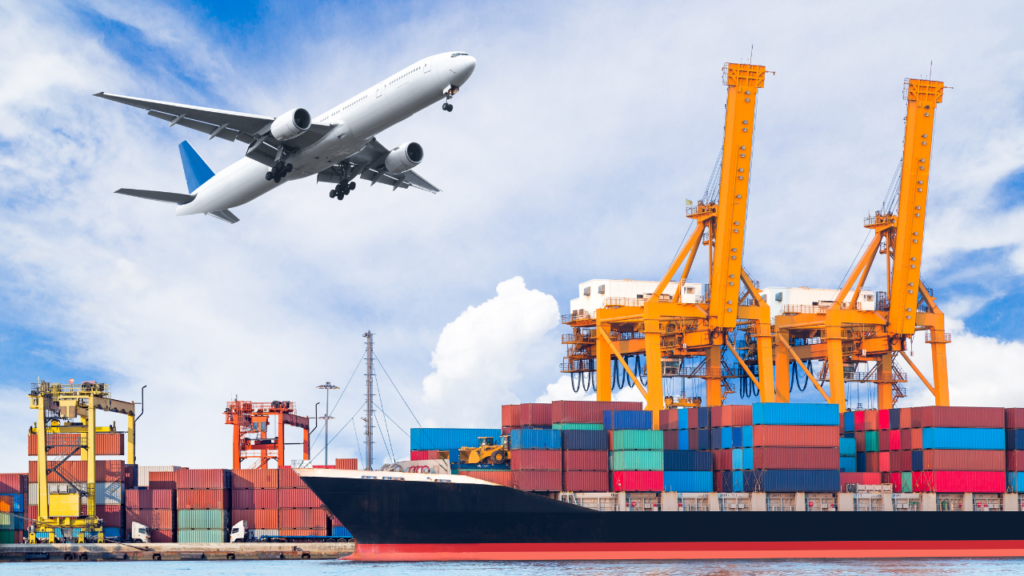Introduction : export and import
In today’s interconnected world, international trade plays a crucial role in shaping economies, creating jobs, and enhancing the standard of living. At the heart of international trade are two fundamental concepts: exports and imports. Understanding these concepts is essential for businesses, policymakers, and economists alike. This blog will delve into the definitions, key differences, and the significance of exports and imports, along with insights from Biny Baba, a seasoned business advisor. We will also discuss which of the two is more important for a country’s economic health.
Table of Contents

Definitions: export and import.
Exports are goods and services produced in one country and sold to another. When a company manufactures products and sells them overseas, it is engaging in export activities. Exports can encompass a wide range of items, including agricultural products, manufactured goods, and services like consulting or technology.
Imports, conversely, refer to goods and services purchased from foreign countries. When a country buys products or services from another nation, it is importing them. Imports can include raw materials needed for production, finished goods that are not manufactured domestically, and even services that enhance a country’s service sector.
Key Differences Between Export and Import
- Direction of Trade:
- Exports signify the outflow of goods and services from a country to foreign markets.
- Imports indicate the inflow of goods and services into a country from abroad.
- Economic Impact:
- Exports contribute positively to a country’s Gross Domestic Product (GDP) and can lead to job creation. Countries that successfully export goods often experience economic growth and increased national income.
- Imports allow consumers access to a variety of products and can stimulate competition in local markets. However, excessive reliance on imports can lead to trade deficits, negatively impacting a country’s economy.
- Regulatory Considerations:
- Exporting may require navigating complex regulations, obtaining export licenses, and ensuring compliance with the importing country’s laws.
- Importing often involves tariffs, duties, and compliance with local standards and regulations. Importers must ensure that their products meet domestic safety and quality standards.
- Market Dynamics:
- Exporting opens new markets for businesses, allowing them to diversify their customer base and mitigate risks associated with relying solely on the domestic market.
- Importing enables businesses to access goods that are not available locally, helping them remain competitive and meet consumer demands.
- Supply Chain Management:
- Export logistics involve packaging, transportation, and customs clearance to ensure that goods reach international markets efficiently.
- Import logistics include clearing goods through customs, managing transportation from ports to local markets, and ensuring compliance with domestic regulations.
The Importance of Export and Import for a Country
Both exports and imports are vital for a country’s economic well-being, but their importance can vary based on specific circumstances and goals.
- Exports: Driving Economic Growth
- Job Creation: Exports are crucial for job creation, particularly in manufacturing and service sectors. When companies expand their reach internationally, they often need to hire more workers.
- Innovation and Competitiveness: Engaging in international markets fosters innovation as businesses strive to meet diverse consumer demands. This competition drives companies to improve their products and services.
- Trade Balance: A positive trade balance (more exports than imports) is generally viewed as beneficial. It indicates that a country is producing goods that are in demand globally, which can lead to increased foreign currency reserves.
- Imports: Enhancing Consumer Choice and Economic Efficiency
- Access to Resources: Imports provide countries with essential raw materials and goods that may not be available domestically. This access is vital for industries that rely on specific inputs for production.
- Consumer Benefits: Imports increase consumer choice and can lead to lower prices for goods and services. This competition can drive local producers to improve quality and reduce costs.
- Economic Efficiency: By importing goods that can be produced more efficiently in other countries, nations can focus their resources on industries where they have a comparative advantage, leading to overall economic efficiency.
Insights from Biny Baba: export and import
Biny Baba, an experienced business advisor, emphasizes the importance of balancing exports and imports for sustained economic health. His insights highlight the following key points:
- Strategic Exporting: Biny advocates for businesses to develop strategic export plans that consider market demand, pricing, and regulatory compliance. He believes that companies should conduct thorough market research to identify profitable opportunities abroad.
- Navigating Imports: On the import side, Biny advises businesses to establish strong relationships with reliable suppliers and logistics partners. He emphasizes the need for due diligence to ensure compliance with regulations and quality standards.
- Balanced Trade Approach: Biny suggests that countries should aim for a balanced trade approach. While exporting can drive growth, importing is equally important for providing consumers with diverse choices and supporting local industries. A focus on both aspects can enhance a country’s overall economic resilience.

Which is More Important for a Country? – export and import.
The debate over whether exports or imports are more important for a country is nuanced. Here are some considerations:
- Economic Growth vs. Consumer Welfare: Exports often drive economic growth and job creation, which can be critical for developing economies. However, imports are essential for consumer welfare and can improve the quality of life by providing access to a wider array of goods and services.
- Trade Deficits and Surpluses: Countries with trade surpluses (more exports than imports) may benefit from increased national income, while those with trade deficits need to be cautious. However, a trade deficit is not inherently negative; it can signify strong consumer demand and investment opportunities.
- Global Interdependence: In an increasingly globalized economy, countries rely on each other for various goods and services. The interdependence created by both exports and imports can lead to stronger economic ties and partnerships.
Here are shortened links and descriptions related to export and import:
- U.S. Customs and Border Protection (CBP) – cbp.gov
Information on export/import regulations and documentation. - Export.gov – export.gov
Resources for U.S. exporters, including market research and compliance. - International Trade Administration (ITA) – trade.gov
Market reports and insights for identifying export opportunities. - World Bank’s Doing Business Report – worldbank.org
Annual assessments of business environments and trade regulations. - Export-Import Bank of the United States (EXIM) – exim.gov
Financing solutions for U.S. exporters. - Small Business Administration (SBA) – sba.gov
Resources and loans for small businesses engaged in exporting. - International Chamber of Commerce (ICC) – iccwbo.org
Guidelines and resources on international trade law.

Conclusion: export and import.
In conclusion, both exports and imports are essential components of international trade that contribute to a country’s economic health in different ways. Exports drive economic growth, innovation, and job creation, while imports enhance consumer choice, provide access to resources, and promote economic efficiency.
As countries navigate the complexities of global trade, finding a balance between exporting and importing is crucial. Businesses that engage in both activities can harness the benefits of international trade while mitigating risks. By leveraging the insights of experienced advisors like Biny Baba, businesses can develop effective strategies for navigating the global market.
In the end, the importance of exports and imports is not a matter of one outweighing the other; rather, it is about understanding how they complement each other to foster a robust and resilient economy. Embracing both aspects can lead to sustainable growth and improved standards of living for citizens.





